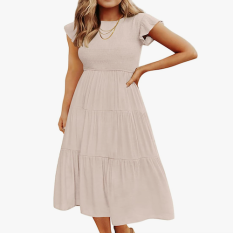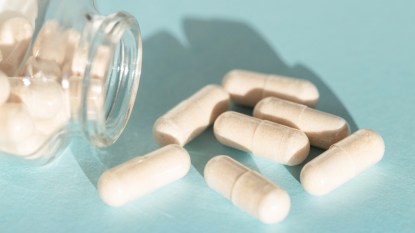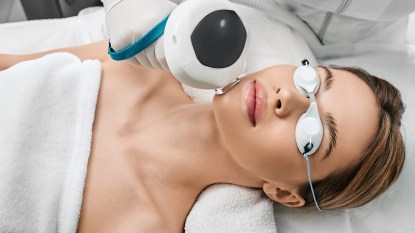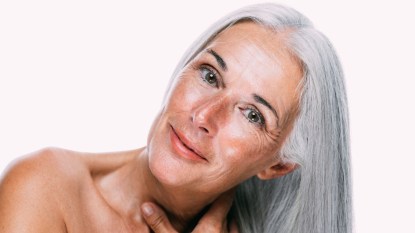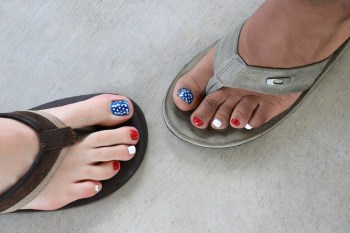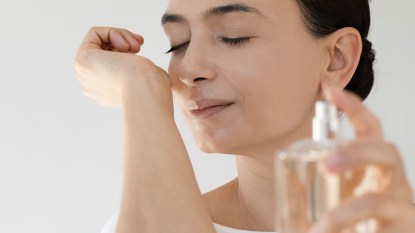Hygral Fatigue Is the Sneaky Culprit of Hair That Looks Thin, Limp and Dull: How To Reverse It
Hint: If you're washing your hair every day you could be dealing with this

The more moisture the better — it’s a reoccurring theme in the beauty world. More moisture is touted as the solution for a variety of both skin care and hair care woes. So it may surprise you to know that more moisture isn’t always the right move, particularly as it pertains to your hair. In fact, too much of it can end up having the opposite intended effect and actually damage your strands. It’s a condition known as hygral fatigue, and all hair types are at risk. Here, top experts explain exactly what hygral fatigue is, and share the best ways to prevent (and treat) this strand saboteur.
What is hygral fatigue?
Hygral fatigue is essentially an over-conditioning of the hair, explains stylist Rogerio Cavalcante, owner of The Second Floor Salon in New York City. When hair absorbs moisture it swells and then deflates. Too much of this repetitive swelling and contracting weakens the hair’s structure over time, much like how a balloon would weaken if you kept inflating and deflating it, he explains. It’s important to note that this can occur both from using too much conditioner (and/or using it too often or using the wrong formula for your hair type), but also if your hair is constantly over-saturated just with water alone. Frequent washing and swimming can cause hygral fatigue, says Gigi Pogosyan, master colorist and owner of Balayage by Gigi.
How to know if you’re dealing with hygral fatigue
No matter how hygral fatigue arises, the signs of it are all the same: Hair that tangles or breaks easily, lacks elasticity, feels limp, or generally looks dull and frizzy, says Cavalcante. And while it can affect all hair types and textures, there are some that are more likely to develop hygral fatigue. “Fine hair strands have a lower diameter and are more delicate, making them more susceptible to damage from excessive water absorption,” explains Pogosyan.
“Hair that’s been chemically-treated or colored is already weakened,” notes Pogosyan. So “when it’s exposed to too much water it can experience even further damage and breakage from hygral fatigue. And those with curly or kinky hair are also at higher risk. This type of hair is generally dryer, so people tend to use lots of moisturizing products and end up over moisturizing, explains celebrity hairstylist and John Frieda House of Frieda Ambassador Laura Polko.
How to prevent hygral fatigue

First up, limit how often you wash. Pogosyan advises washing your hair only when necessary and using dry shampoo in between washes. Secondly, make sure you’re using a hair-type specific conditioner, advises Cavalcante. This will help ensure it’s not too moisturizing for your particular texture. He also adds that it’s a good idea to scale back on deep conditioning products, such as masks. It’s okay to use one occasionally, but alternate it with a protein-based treatment, which will help boost the health of your hair without increasing the likelihood of hygral fatigue, he notes.
Related: “I Tried Reverse Hair Washing and Was Shocked at How Thick and Shiny My Hair Looks Now”
How to fix hygral fatigue
1. Get a fresh hair cut
Strands already stressed? The first line of defense may be a quick cut. “If your hair is excessively damaged from hygral fatigue, consider a trim to remove damaged split ends and prevent further breakage,” says Pogosyan.
2. Condition hair strategically
Next, stop conditioning each time you shampoo and instead use a lightweight conditioner every few washes, says Cavalcante.
3. Add a protein treatment to your hair care routine
Incorporating a protein-rich treatment is also a good idea. When you’re experiencing hygral fatigue, your hair has too much moisture and not enough protein, explains Polko. Using a leave-in treatment or mask that contains protein once a week is an easy way to help combat hygral fatigue and improve the overall appearance of your hair, she adds.
And how will you know that your strands are no longer ‘fatigued?’ “Improved elasticity, reduced breakage, a stronger feel, improved manageability, and the return of shine and bounce are all signs that your hair is recovering from hygral fatigue,” says Pogosyan.
See more expert-backed hair care tips and tricks:
Why Using a Clarifying Shampoo Is Key for Thick, Healthy Hair, Plus the Best Ones To Use
Have Freshly Colored Hair? Pros Share How To Make It Last 6 Weeks Longer
How Laser Hair Therapy Reverses Thinning Hair! Plus the Best at-Home Devices to Use

